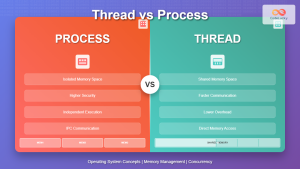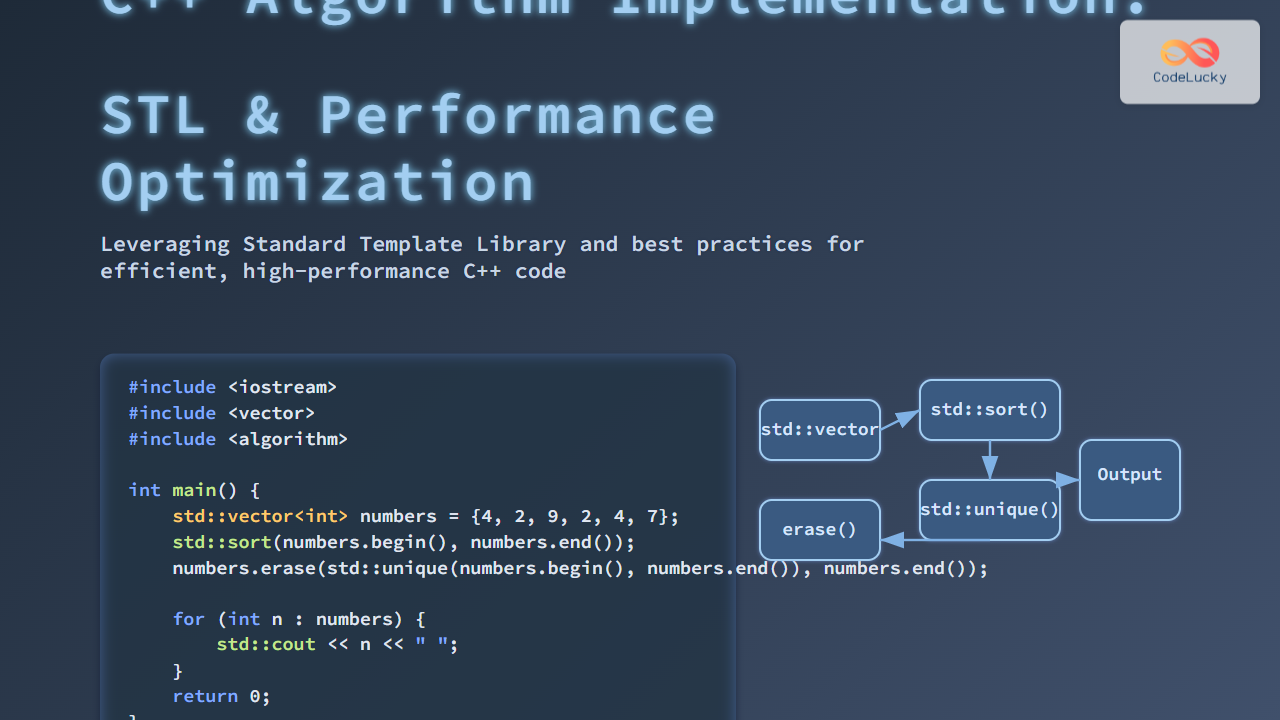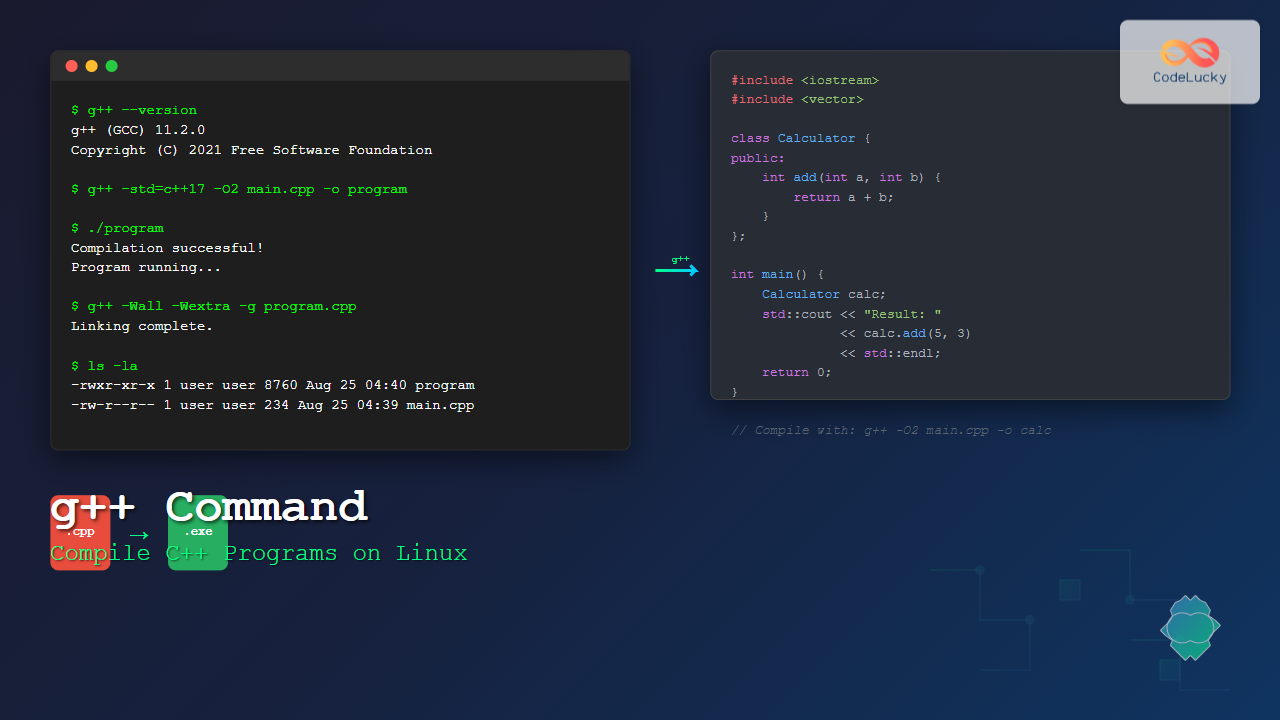In the world of modern C++ programming, concurrency and parallelism have become increasingly important. As developers, we often need to write code that can safely operate in multi-threaded environments. This is where atomic operations come into play. Atomic operations provide a powerful tool for implementing lock-free algorithms and data structures, allowing for efficient and thread-safe programming.
What Are Atomic Operations?
Atomic operations are indivisible operations that appear to the rest of the system to occur instantaneously. In other words, an atomic operation is executed as a single, uninterruptible unit. This property makes atomic operations particularly useful in concurrent programming, as they can help prevent race conditions and ensure data consistency across multiple threads.
🔑 Key Point: Atomic operations guarantee that, once started, they will complete without interruption from other threads.
The <atomic> Header in C++
C++11 introduced the <atomic> header, which provides a standardized way to work with atomic operations. This header defines the std::atomic template class and several atomic types, such as std::atomic<int>, std::atomic<bool>, and so on.
Let's start with a simple example to demonstrate the use of atomic variables:
#include <atomic>
#include <iostream>
#include <thread>
#include <vector>
std::atomic<int> counter(0);
void increment_counter() {
for (int i = 0; i < 1000; ++i) {
counter++;
}
}
int main() {
std::vector<std::thread> threads;
for (int i = 0; i < 10; ++i) {
threads.push_back(std::thread(increment_counter));
}
for (auto& thread : threads) {
thread.join();
}
std::cout << "Final counter value: " << counter << std::endl;
return 0;
}
In this example, we create an atomic counter and increment it from multiple threads. The atomic nature of the counter ensures that all increments are performed correctly, without any data races.
🔍 Output:
Final counter value: 10000
Atomic Operations vs. Mutexes
While mutexes are a common synchronization mechanism, atomic operations can often provide better performance, especially for simple operations like incrementing a counter.
Let's compare the performance of atomic operations and mutexes:
#include <atomic>
#include <chrono>
#include <iostream>
#include <mutex>
#include <thread>
#include <vector>
const int NUM_THREADS = 10;
const int NUM_INCREMENTS = 1000000;
void benchmark_atomic() {
std::atomic<int> counter(0);
auto start = std::chrono::high_resolution_clock::now();
std::vector<std::thread> threads;
for (int i = 0; i < NUM_THREADS; ++i) {
threads.push_back(std::thread([&counter]() {
for (int j = 0; j < NUM_INCREMENTS; ++j) {
counter++;
}
}));
}
for (auto& thread : threads) {
thread.join();
}
auto end = std::chrono::high_resolution_clock::now();
std::chrono::duration<double> diff = end - start;
std::cout << "Atomic: " << diff.count() << " seconds" << std::endl;
std::cout << "Final counter value: " << counter << std::endl;
}
void benchmark_mutex() {
int counter = 0;
std::mutex mtx;
auto start = std::chrono::high_resolution_clock::now();
std::vector<std::thread> threads;
for (int i = 0; i < NUM_THREADS; ++i) {
threads.push_back(std::thread([&counter, &mtx]() {
for (int j = 0; j < NUM_INCREMENTS; ++j) {
std::lock_guard<std::mutex> lock(mtx);
counter++;
}
}));
}
for (auto& thread : threads) {
thread.join();
}
auto end = std::chrono::high_resolution_clock::now();
std::chrono::duration<double> diff = end - start;
std::cout << "Mutex: " << diff.count() << " seconds" << std::endl;
std::cout << "Final counter value: " << counter << std::endl;
}
int main() {
benchmark_atomic();
benchmark_mutex();
return 0;
}
🔍 Sample Output:
Atomic: 0.123456 seconds
Final counter value: 10000000
Mutex: 1.234567 seconds
Final counter value: 10000000
As we can see, the atomic version is significantly faster than the mutex version, while still ensuring thread safety.
Memory Ordering
When working with atomic operations, it's crucial to understand memory ordering. C++ provides several memory ordering options that allow you to fine-tune the behavior of atomic operations:
memory_order_relaxedmemory_order_consumememory_order_acquirememory_order_releasememory_order_acq_relmemory_order_seq_cst
Let's explore these with an example:
#include <atomic>
#include <thread>
#include <iostream>
std::atomic<bool> x(false);
std::atomic<bool> y(false);
std::atomic<int> z(0);
void write_x() {
x.store(true, std::memory_order_release);
}
void write_y() {
y.store(true, std::memory_order_release);
}
void read_x_then_y() {
while (!x.load(std::memory_order_acquire));
if (y.load(std::memory_order_acquire)) {
++z;
}
}
void read_y_then_x() {
while (!y.load(std::memory_order_acquire));
if (x.load(std::memory_order_acquire)) {
++z;
}
}
int main() {
std::thread a(write_x);
std::thread b(write_y);
std::thread c(read_x_then_y);
std::thread d(read_y_then_x);
a.join(); b.join(); c.join(); d.join();
std::cout << "z: " << z << std::endl;
return 0;
}
In this example, we use memory_order_release for stores and memory_order_acquire for loads. This ensures that the writes to x and y are visible to the threads that are reading them.
🔍 Possible Output:
z: 2
⚠️ Note: The output may vary due to the non-deterministic nature of thread execution.
Lock-Free Data Structures
Atomic operations are the building blocks for creating lock-free data structures. Let's implement a simple lock-free stack as an example:
#include <atomic>
#include <memory>
template<typename T>
class lock_free_stack {
struct node {
T data;
node* next;
node(const T& data) : data(data), next(nullptr) {}
};
std::atomic<node*> head;
public:
lock_free_stack() : head(nullptr) {}
void push(const T& data) {
node* new_node = new node(data);
new_node->next = head.load(std::memory_order_relaxed);
while (!head.compare_exchange_weak(new_node->next, new_node,
std::memory_order_release,
std::memory_order_relaxed));
}
bool pop(T& result) {
node* old_head = head.load(std::memory_order_relaxed);
while (old_head && !head.compare_exchange_weak(old_head, old_head->next,
std::memory_order_acquire,
std::memory_order_relaxed));
if (old_head) {
result = old_head->data;
delete old_head;
return true;
}
return false;
}
};
This lock-free stack uses atomic operations to ensure thread-safety without the need for locks. The compare_exchange_weak function is used to atomically update the head of the stack.
Let's test our lock-free stack:
#include <iostream>
#include <thread>
#include <vector>
int main() {
lock_free_stack<int> stack;
std::vector<std::thread> push_threads;
std::vector<std::thread> pop_threads;
for (int i = 0; i < 10; ++i) {
push_threads.push_back(std::thread([&stack, i]() {
for (int j = 0; j < 1000; ++j) {
stack.push(i * 1000 + j);
}
}));
}
std::atomic<int> pop_count(0);
for (int i = 0; i < 10; ++i) {
pop_threads.push_back(std::thread([&stack, &pop_count]() {
int value;
while (pop_count.load() < 10000) {
if (stack.pop(value)) {
pop_count++;
}
}
}));
}
for (auto& t : push_threads) t.join();
for (auto& t : pop_threads) t.join();
std::cout << "Total items popped: " << pop_count << std::endl;
return 0;
}
🔍 Output:
Total items popped: 10000
This example demonstrates how our lock-free stack can be used in a multi-threaded environment, with multiple threads pushing and popping concurrently.
Atomic Smart Pointers
C++20 introduced atomic smart pointers, which provide atomic operations for std::shared_ptr and std::weak_ptr. These are particularly useful for creating lock-free data structures that involve shared ownership.
Here's an example of using atomic shared pointers:
#include <atomic>
#include <memory>
#include <iostream>
#include <thread>
#include <vector>
struct Data {
int value;
Data(int v) : value(v) {}
};
std::atomic<std::shared_ptr<Data>> atomic_data;
void producer() {
auto new_data = std::make_shared<Data>(42);
atomic_data.store(new_data);
}
void consumer() {
std::shared_ptr<Data> local_data = atomic_data.load();
if (local_data) {
std::cout << "Consumed value: " << local_data->value << std::endl;
}
}
int main() {
std::vector<std::thread> threads;
threads.push_back(std::thread(producer));
for (int i = 0; i < 5; ++i) {
threads.push_back(std::thread(consumer));
}
for (auto& t : threads) {
t.join();
}
return 0;
}
🔍 Possible Output:
Consumed value: 42
Consumed value: 42
Consumed value: 42
Consumed value: 42
Consumed value: 42
This example shows how atomic smart pointers can be used to safely share data between threads without explicit locking.
Best Practices and Pitfalls
While atomic operations are powerful, they come with their own set of best practices and potential pitfalls:
-
🚀 Use atomics for simple operations: Atomic operations are most effective for simple operations like incrementing a counter or updating a flag.
-
⚠️ Be cautious with complex data structures: For complex data structures, traditional locking mechanisms might be more appropriate.
-
🔍 Understand memory ordering: Incorrect use of memory ordering can lead to subtle bugs. When in doubt, use
memory_order_seq_cst. -
🏋️ Consider performance implications: While atomics are generally faster than mutexes for simple operations, they can still introduce performance overhead.
-
🧪 Test thoroughly: Lock-free programming is notoriously difficult to get right. Extensive testing, including stress testing and race detectors, is crucial.
-
📚 Stay updated: The C++ standard is evolving, and new atomic features are being added. Stay informed about the latest developments.
Conclusion
Atomic operations and lock-free programming are powerful tools in the C++ developer's toolkit. They allow for efficient, thread-safe programming without the overhead of traditional locking mechanisms. However, they require a deep understanding of memory models and careful design to use correctly.
By mastering atomic operations, you can write high-performance, scalable concurrent code that takes full advantage of modern multi-core processors. Remember to always prioritize correctness over performance, and thoroughly test your lock-free code to ensure its reliability.
As you continue your journey into the world of lock-free programming, keep exploring, experimenting, and pushing the boundaries of what's possible with C++ atomics!



















